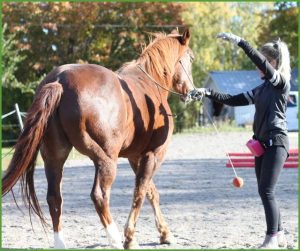Why I engage with non R+ trainers!
Sharing these ideas is not easy. I worry that by doing so, I/we will be judged! Simultaneously though, I see great value and importance in them – therefore I am grateful for you reading the rest of this post.
One thing I endeavour to do at Animal Training Academy is to be inclusive of a diverse range of human learners! This isn’t always easy to do, though, as others might use different techniques or tools than I do. And depending on the tools being used, this can be both confronting and emotionally challenging to observe.
However, I have learned over the years that a significant amount of people in a considerable amount of contexts want the same things as I do! And this is to do what’s best for their animals! Although, we often have different ways of reaching this goal due to bringing diverse experience and knowledge to the table. [Generally speaking, I believe people are doing the best they can with the knowledge and resources they have – quote from unknown source].
Recognising this common goal we share has helped me become more vulnerable and have conversations/build relationships with a diverse range of trainers! Leaving my judgement at the door has allowed me to learn a tonne, become more curious and lay some foundations for new friendships, which subsequently opened doors for me to share more about positive reinforcement … and I feel I am a much better trainer/person for it!
Therefore I was thrilled when we got an opportunity to discuss these ideas in a recent ATA podcast episode with Swedish trainers Eva Bertilsson and Angelica Hesselius [see a paraphrased segment below – from roughly the 30 min mark].
 [Eva Bertilsson] I’m guessing that it can be easy to watch more traditional horse training and say, Nope, don’t like it, negative reinforcement, don’t like it. And then not look any further and miss all the benefits, which would be unfortunate.
[Eva Bertilsson] I’m guessing that it can be easy to watch more traditional horse training and say, Nope, don’t like it, negative reinforcement, don’t like it. And then not look any further and miss all the benefits, which would be unfortunate.
[Angelica Hesselius] There are not too many people yet that teach dressage and have a positive reinforcement background – we are becoming more and more, but there’s still a lack of us. So, unfortunately, people are likely to work with a negative reinforcement trainer.
 And – I can understand that people can feel a bit vulnerable putting themselves in a situation where they have a teacher working with a different system, but to go there without your horse and observe, might be a good idea for many people. I find I have a lot of great discussions with trainers that choose to train very differently from me.
And – I can understand that people can feel a bit vulnerable putting themselves in a situation where they have a teacher working with a different system, but to go there without your horse and observe, might be a good idea for many people. I find I have a lot of great discussions with trainers that choose to train very differently from me.
[Eva Bertilsson] It is a bit about separating the goal of your training from the method of that training. You can still learn about valuable movement/balance and then figure out how you can do it with positive reinforcement.
Want to hear more from Eva & Angelica? Check out part one of our conversation HERE
Once again – this definitely isn’t always easy to do! But I feel it is our responsibility to respect everyone as an individual, apply the same principles to them as our non-human learners and remember they are just us with different information/experience – [quote from unknown source].
In fact, one of the essential principles that is included in our membership community guidelines/ATA mindset is [borrowed from the book crucial conversations]; “The only right I have to express my opinion is to be equally vigorous in encouraging you to share yours.”
Our members love this component of ATA, including the amazing Sara Crockett.

We are super excited to be able to let you into this community very soon!
You can be the first to know when we re-open our doors [during our limited enrolment periods] by clicking the button below – we look forward to seeing you on the inside then!
Best Regards
Ryan Cartlidge
Animal Training Academy – 🐾
